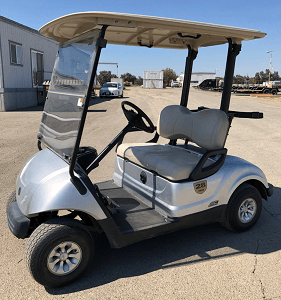Cost to Replace Golf Cart Batteries
Due to the fact that they don’t have to be refilled with fuel constantly and because of their durability, electric golf carts are chosen by many golf cart owners. Though, like any other type of battery used for a car or means of transportation, it has a certain lifetime and has to be replaced at some point.
How Much Does it Cost to Replace Golf Cart Batteries?
In general, the amount of money you are going to spend in order to replace a golf cart battery will be influenced by some factors such as the store you buy it from, the brand, and the voltage of the battery. However, if you want to replace your golf cart battery, you should plan on spending anywhere between $75 and $250.
Expect to pay more than $140 for a golf cart battery that will last more than four hundred minutes on a single charge. A more affordable option is the batteries that cost less than $120. These will usually be a 6-volt brand and will have to be charged more often.
You might also like our articles on the cost of golf driving ranges, golf carts, and car battery replacements.
For example, you will have to pay anywhere between $75 and $110 for a UPG 85980/D5722 sealed lead acid battery manufactured by UPG.
From the GolfLink.com website, we found out that the cost of a T-105 golf battery, which is one of the best golf cart batteries, would be anywhere between $110 and $135. Meanwhile, for one of the most popular models, the US-2200 you will have to pay anywhere between $150 and $220.
Also, you can find a large variety of golf cart batteries at Sam’s Club, for which you will have to pay anywhere between $95 and $120.
Replacing a golf cart battery details
Some of the most popular brands of golf cart batteries include Yamaha, Bag Boy, Western Golf Car, Club Car, Sun Mountain, E-Car, PowaKaddy, Fairplay, Minn Kota, and Lido.
When purchasing a golf cart battery from the most reputable brands you will receive a limited warranty. You can have your battery replaced or get your money back in case the battery will malfunction or does not hold a charge within a certain period of time.
Also, when you buy a battery, this should come with simple instructions for installation and use. Plus, this will come with a cord used to charge the battery between uses.
There are different amp capacities for the golf cart batteries. The charge will hold longer if the capacity is higher and as a result, you can use the golf cart for a longer period of time. Though, the higher the amp capacity, the more you will have to pay for the battery.
What are the extra costs?
In case you purchase the battery online, you will have to budget for the shipping fees as well.
Plan on spending another $15 to $30, in case you need a professional to swap out or install the battery.
For a golf cart charger, you will have to pay another $110 to $270. However, this is optional.
Important things to consider
Before purchasing a golf cart battery you should do some research. Look for information regarding the time a battery should be charged before it is full and how long does it last after a charge.
Also, before making a decision make sure you know exactly the weight of your cart because the heavier it is, the more powerful the battery will need to be.
 Make sure you do not overcharge the battery. Try to use a charger that will shut off automatically when the battery is done charging. In case you are not able to find such a charger, set an alarm to know when to unplug the battery.
Make sure you do not overcharge the battery. Try to use a charger that will shut off automatically when the battery is done charging. In case you are not able to find such a charger, set an alarm to know when to unplug the battery.
Do not wait until a battery dies to charge it and try to charge it between each use.
Take into consideration buying two batteries to have a backup in case one of them fails.
Not all golf cart batteries are made the same, so always know the sizes of your battery before making a purchase.
If a battery has a lower output, it will tend to last longer.
You will put more stress on a battery if you drive the golf cart faster.
Verify to see if the battery is covered under a warranty if it fails within a few years.
When you are done using the golf cart, make sure you remove the key, and turn off the radio, light, and other accessories, so the battery will last longer.
How can I save money?
Before deciding to buy a golf cart battery, make sure you are looking for multiple price offers. Also, keep an eye on the coupons and promotions available from time to time at many online stores.
You may get a bulk discount if you intend to purchase more than one battery.
It is very easy to install a golf cart battery. If you want to save money, try to install it by yourself and not pay a professional. However, if you purchase a golf cart battery through a particular provider, they might install it for free.
Finally, one of the best ways to save money on a golf cart battery is to take care of it so it will last for a longer period of time.


Leave a Reply
Want to join the discussion?Feel free to contribute!